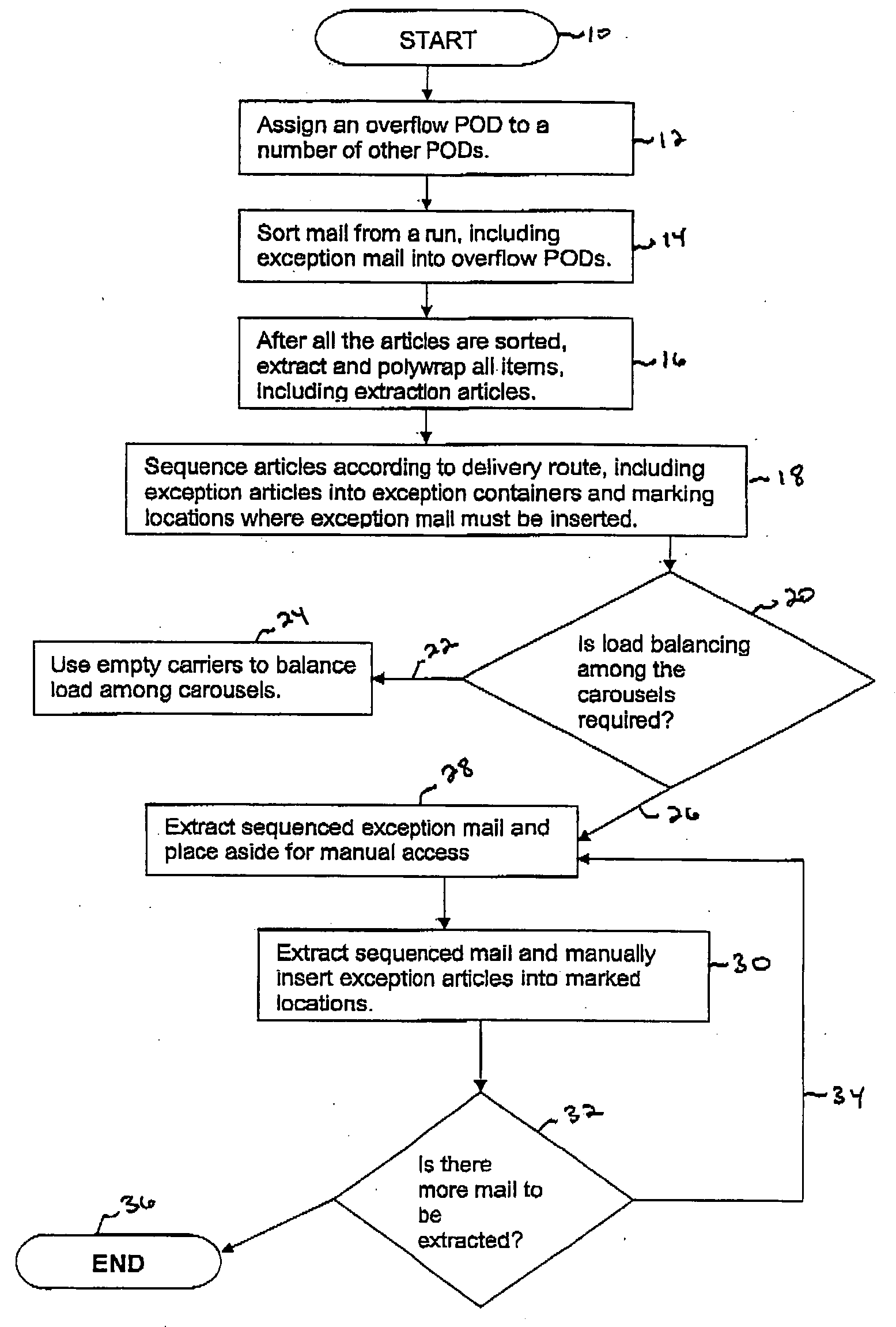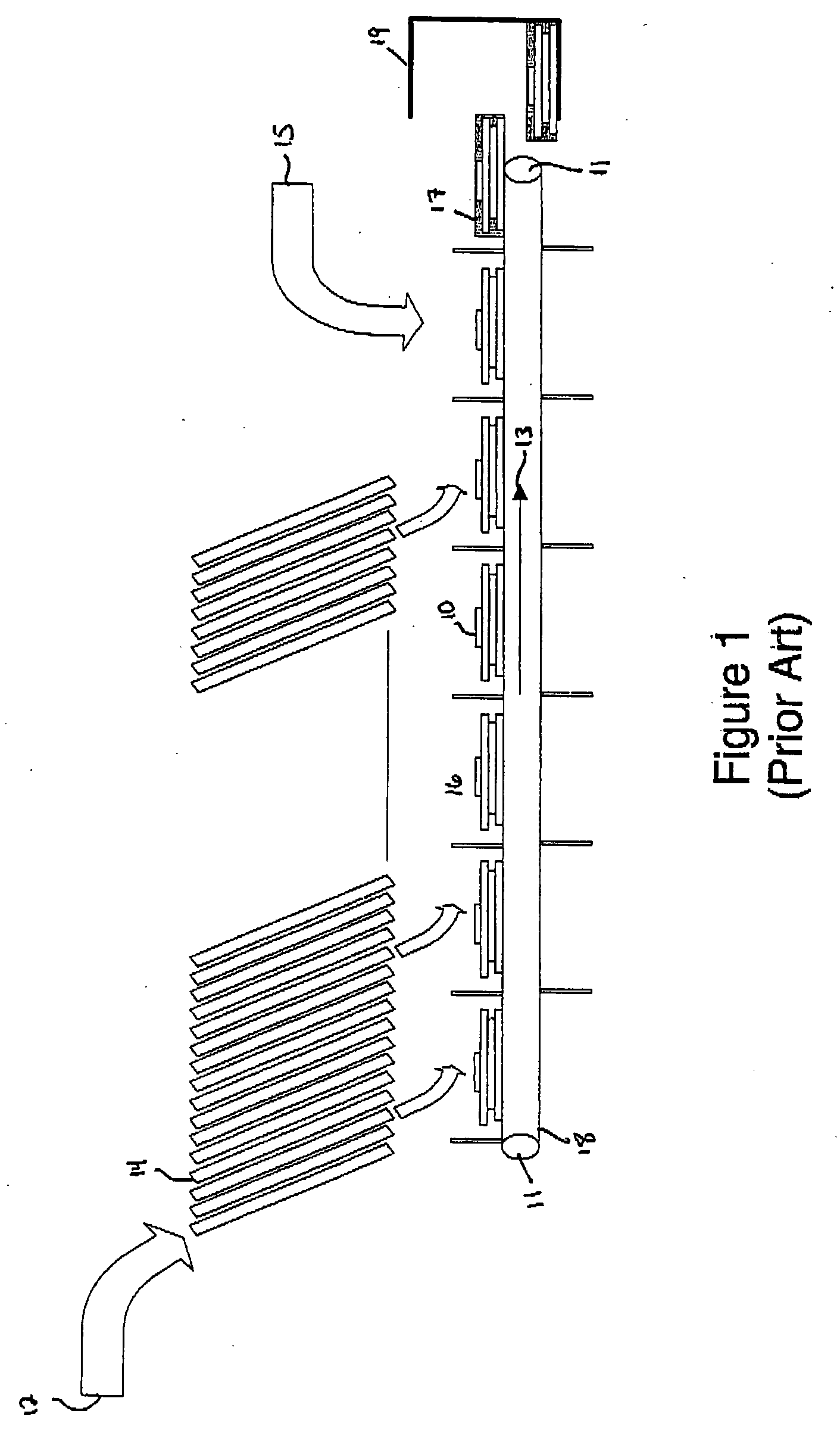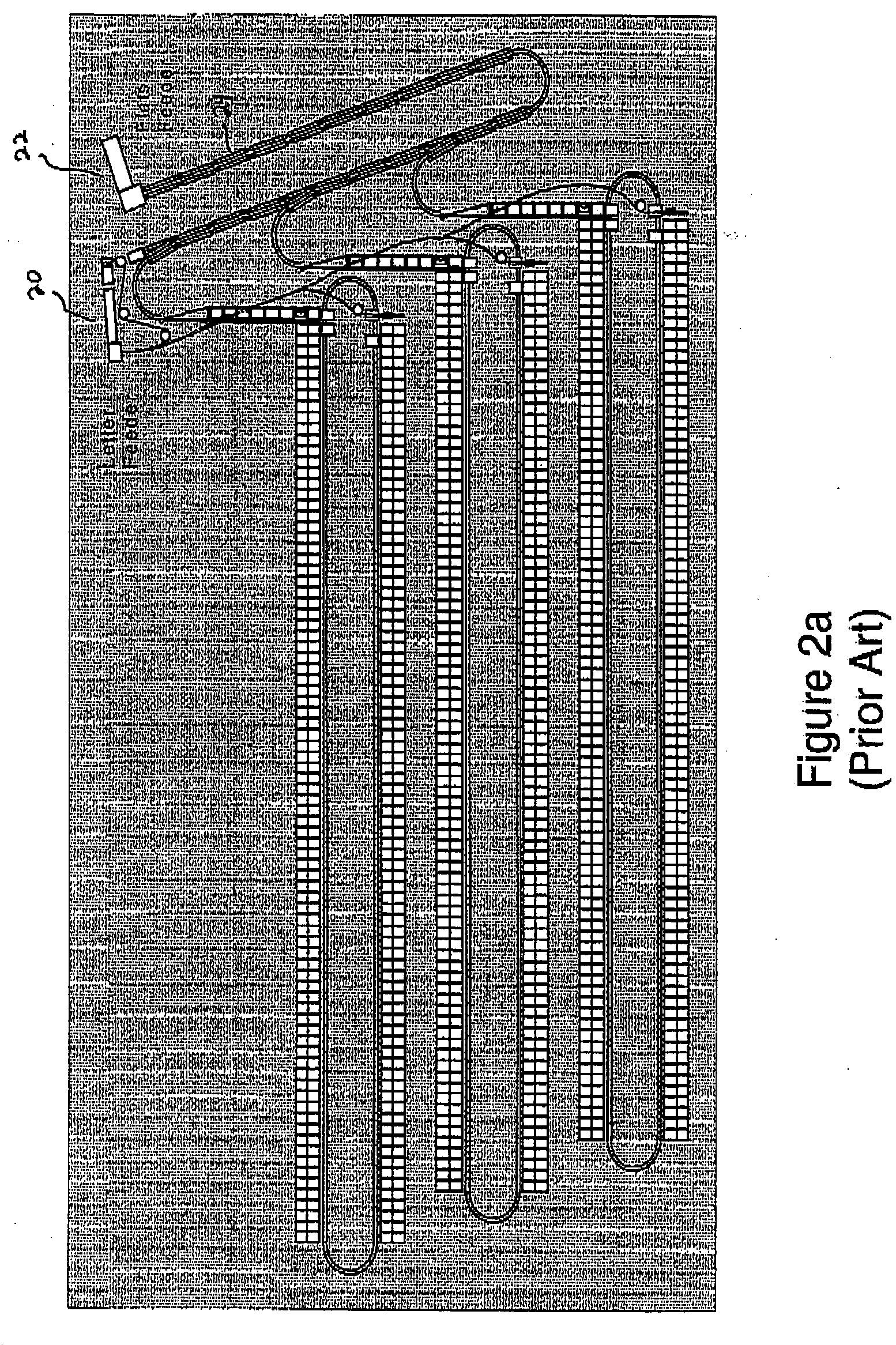Exception mail handling
a mail handling and exception technology, applied in the field of article extraction systems and methods, can solve the problems of short time window, large number of active and controlled pockets, and the necessity of article sequencing processes, and achieve the effects of increasing costs, dpp size, and dpp engineering requirements
- Summary
- Abstract
- Description
- Claims
- Application Information
AI Technical Summary
Benefits of technology
Problems solved by technology
Method used
Image
Examples
Embodiment Construction
[0013]FIG. 4 depicts a flowchart of the present method. As set out, the method begins (10) and proceeds to step 12 wherein an overflow or exception POD is assigned to one or more regular article PODs. As will be depicted in FIG. 5, the ratio of regular to exception PODs is two to one. However, other ratios may be used as required by application, such as ten to one. The assignment may be performed logically by appropriate control and computer means. PODs comprise a plurality of pockets, each for receiving at least one article. The pockets are logically assigned to at least one destination point. Accordingly, before a sorting run, regular POD pockets may be logically assigned to select destination addresses while the exception POD pockets may be logically and dynamically assigned to the same destination addresses with the understanding that an overflow may not occur for all destination addresses thereby freeing up additional pockets to assist with exceptionally heavy article flow to s...
PUM
 Login to View More
Login to View More Abstract
Description
Claims
Application Information
 Login to View More
Login to View More - R&D
- Intellectual Property
- Life Sciences
- Materials
- Tech Scout
- Unparalleled Data Quality
- Higher Quality Content
- 60% Fewer Hallucinations
Browse by: Latest US Patents, China's latest patents, Technical Efficacy Thesaurus, Application Domain, Technology Topic, Popular Technical Reports.
© 2025 PatSnap. All rights reserved.Legal|Privacy policy|Modern Slavery Act Transparency Statement|Sitemap|About US| Contact US: help@patsnap.com



